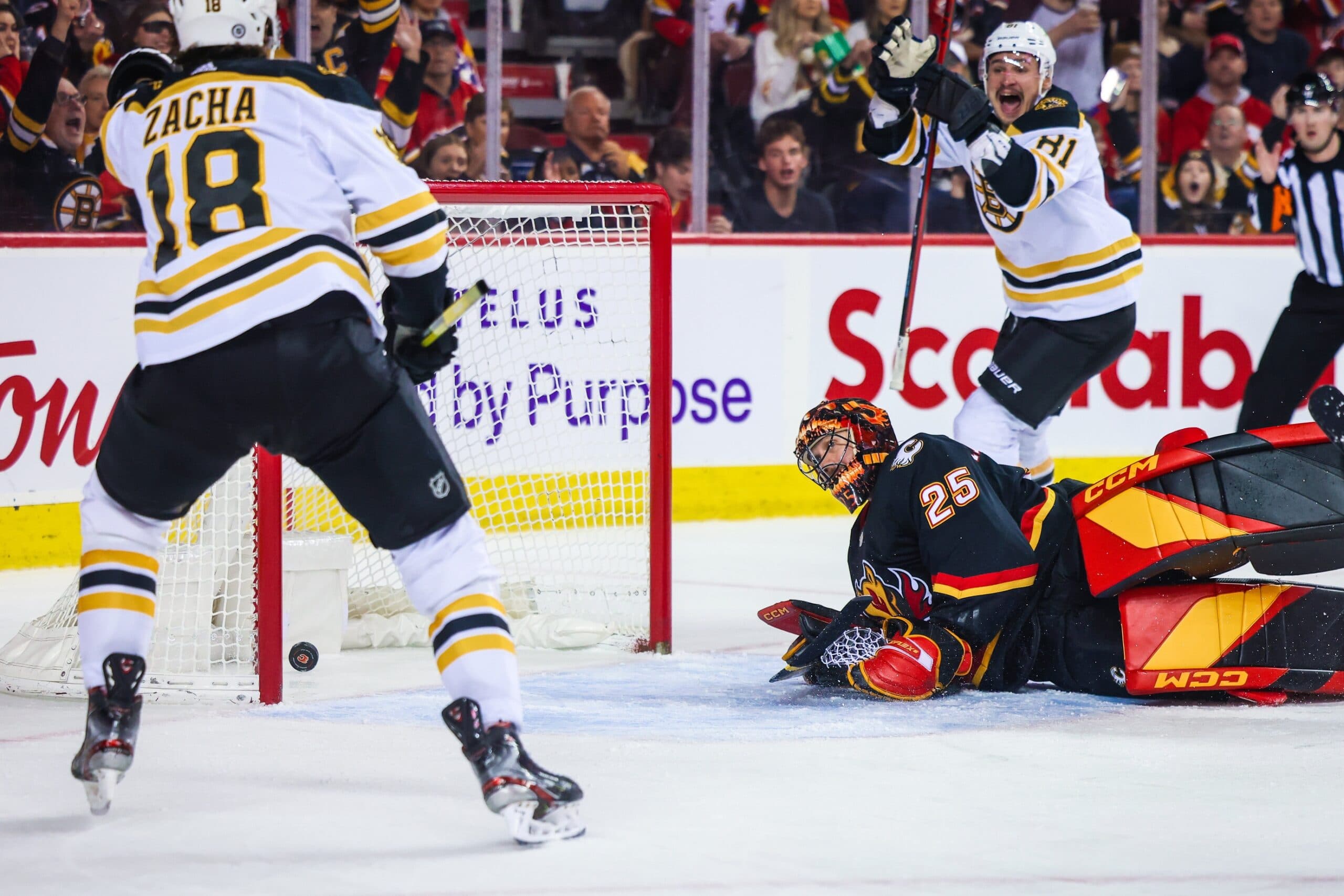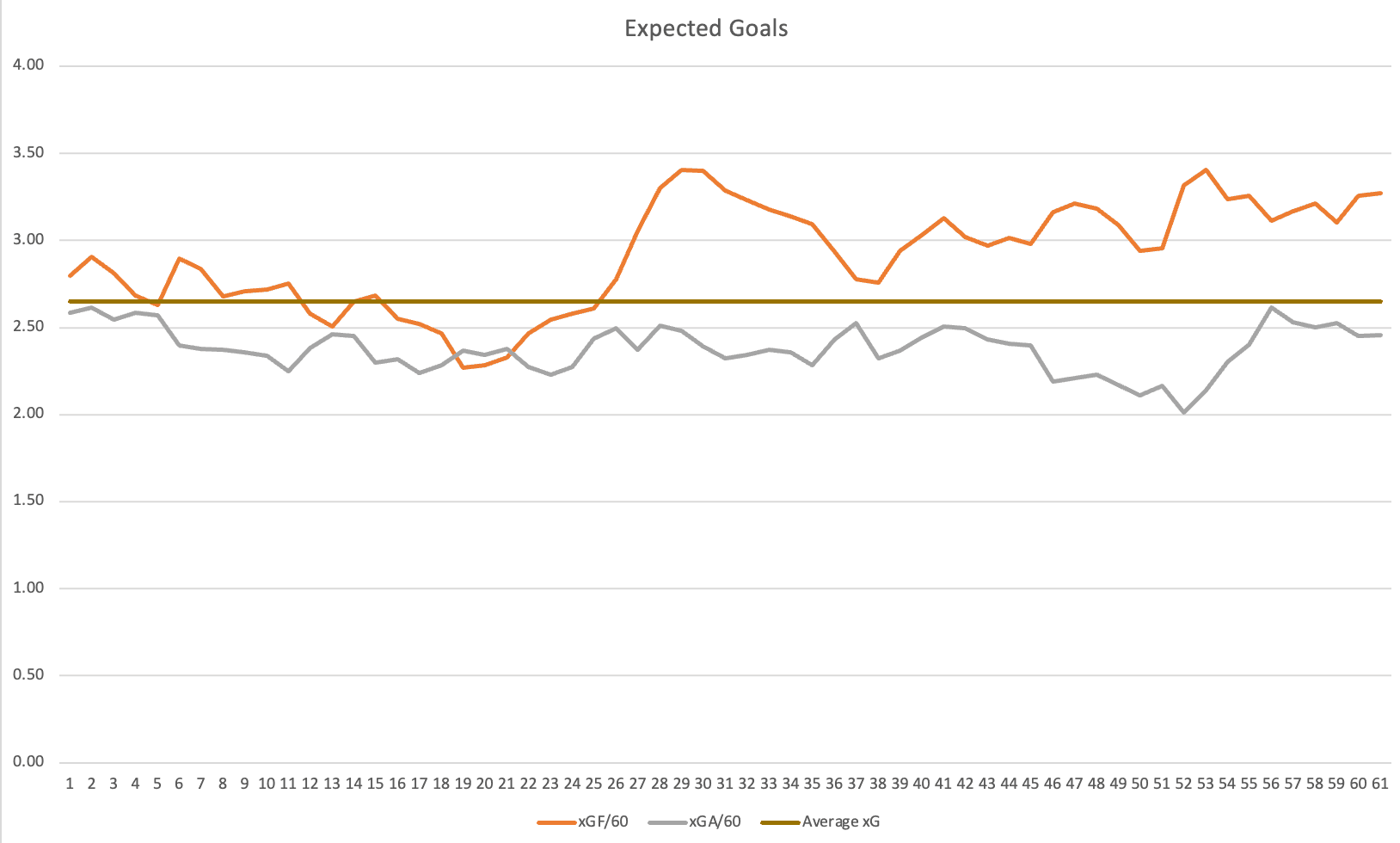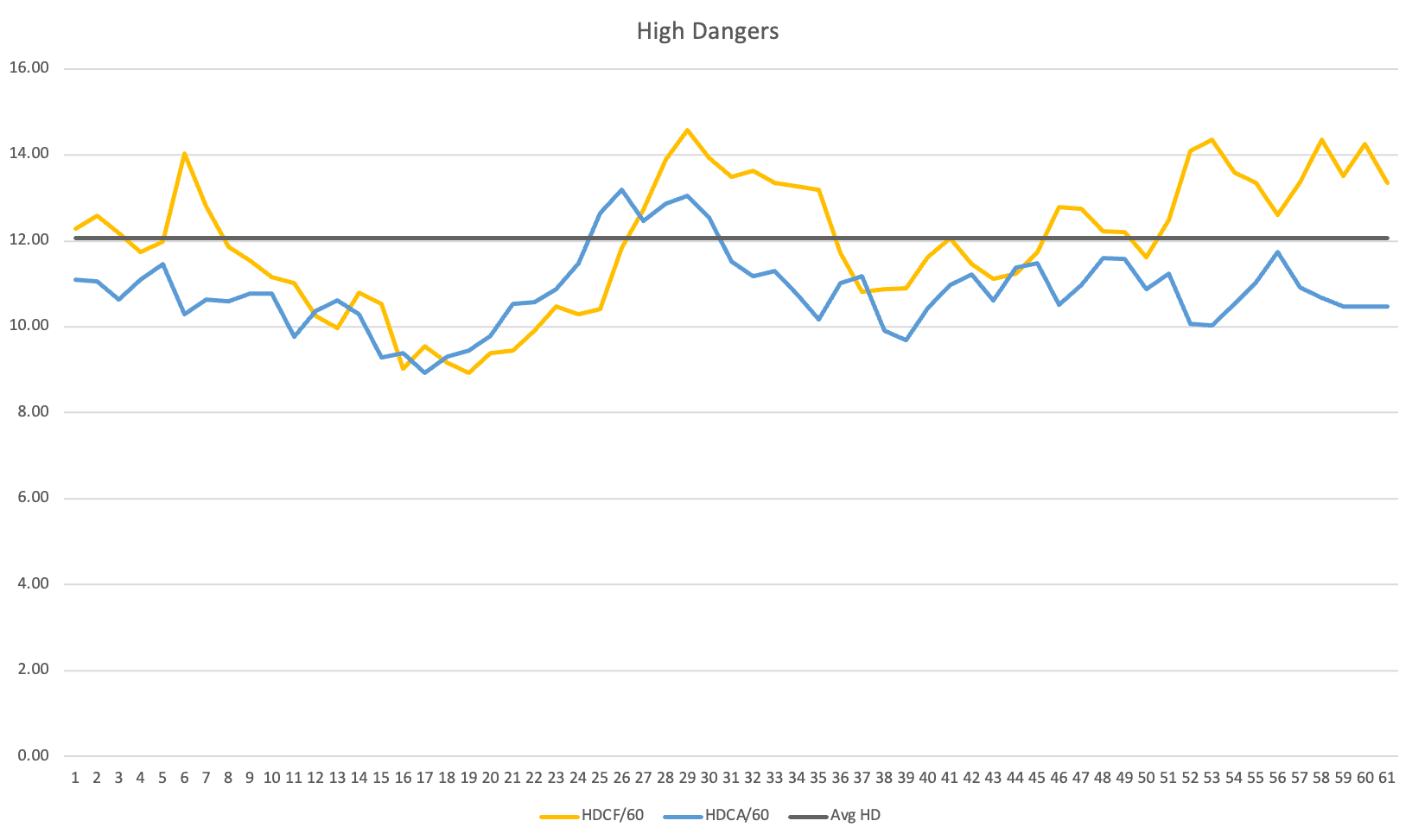Nation Sites
The Nation Network
FlamesNation has no direct affiliation to the Calgary Flames, Calgary Sports and Entertainment, NHL, or NHLPA
Why aren’t the Calgary Flames in a playoff spot?

Photo credit: Sergei Belski-USA TODAY Sports
We knew that the Calgary Flames would be a different team in 2022-23 than they were in 2021-22. The club lost scoring forwards Johnny Gaudreau, Sean Monahan and Matthew Tkachuk over the summer, and found out they would be without dynamic blueliner Oliver Kylington just before training camp.
But this edition of the hockey club has been perplexing for analysts, both inside the market and throughout the league. They’re a borderline dominant possession and shot volume team that simply has not translated that into sustained offensive success. With a dozen games left in the schedule, they’re four points out of a playoff spot. So what gives? Why aren’t the Flames in a playoff spot?
A preamble
For those that don’t dabble in advance stats or analytics, here’s the general gist of the philosophy behind why folks pay attention to those types of things: goals are rare, so analytics tend to focus on things that are more common that act as precursors to goals in order to build predictive models.
The general idea is that having the puck is better than chasing the puck. Then, there are questions about what the team does with the puck once they have it. So we have metrics like Corsi (shot attempts), Fenwick (unblocked shot attempts) and Shots that act as proxies for possession. Then, things like Scoring Chances (shot attempts from the home plate area), High Danger Chances (shot attempts from even closer in, and usually also things like rebounds and rush chances from specific areas) and Expected Goals (a blend of shot volume and quality) as a way of measuring dangerous possession.
In an ideal world, the perfect hockey team would have the puck a lot and generate a high proportion of dangerous scoring opportunities when they had the puck. Conversely, they would have the puck a lot by minimizing the time and danger of their opponent’s possession.
And that brings us to the 2022-23 Flames…
The Flames have the puck a lot
However you want to define it – Corsi, Fenwick or Shots – the Flames have the puck a lot. At five-on-five, they own a +497 shot differential through 70 games and a +591 shot differential in all situations. Only Carolina has dominated the shot metrics more this season. (To put that more tangibly, an average Flames game this season has them out-shooting their opponents by seven at five-on-five and eight overall.)
The Flames are first in the NHL at five-on-five shots for and second in all situations shots (behind Florida). They’ve allowed the second-fewest shots in the NHL (both five-on-five and all situations) behind Carolina.
The Flames are an “expected goals” monster
Let’s throw some stats at you first, then we’ll get into the theory.
In terms of most expected goals for, the Flames are fifth at five-on-five and eighth in all situations. In terms of fewest expected goals against, the Flames are fourth at five-on-five and third in all situations. Whichever way you want to slice it, they’re an expected goals beast, and they’ve been one basically all season.
Here’s a rolling 10-game average of the club’s expected goals for, against, and the league average.

They’ve defended well all season, with that trendline never exceeding the league average. Their expected goals generation has wobbled most of the season, but has spent a lot of time above the league average.
Now, the potential flaw with this stat is that expected goals is derived from a combination of shot volume and shot quality. So, in theory, teams could pepper their opponents with a barrage of low-danger shots and accumulate enough shot quality through these low quality shots that their expected goals for would eventually become respectable (or even quite good).
The Flames are what we expected when it comes to dangerous chances
So, remember when training camp began and everybody in hockey media went “Yeah, sure, the Flames lost a bunch of proven offensive players from their 2021-22 team, but they’re still very good defensively so they’ll be fine”?
The thought process league-wide was some version of this: the Flames would be a fairly average offensive team without Monahan, Tkachuk and Gaudreau, but their defensive play would make up for it. They’d need to grind out a few close games, but it would probably be fine.
Well, we were half-right.
If you’re an Expected Goals skeptic and only care about High-Danger Chances, the Flames are 17th in the league in terms of generating them (both at five-on-five and overall). That’s average, about where we expected them to be. Defensively, they’re sixth in terms of fewest High-Danger Chances allowed (again, both at five-on-five and overall). Again, about where we expected them to be.
As with Expected Goals, here’s a 10-game rolling trendline.

Offensively, they tend to generate more high-dangers than they give up – the yellow line is ahead of the blue line for most of the season. Heck, aside from a short part of the season, they’ve never been below-average in preventing high-danger chances. For big chunks of the season, they’ve been above average in generating high-danger chances.
So even if you think Expected Goals is wildly inflated by their shot volume – and yeah, it definitely is to some extent – they’re a good enough defensive team (and an adequate enough offensive team) that it shouldn’t make this much of a difference.
So now let’s getting into finishing and saving.
The Flames are among the worst teams at the “puck luck” percentage metrics
During the course of the season, you’ve probably said to yourself one or both of the following sentences during a Flames game:
- “Oh (curse word), the Flames cannot buy a goal!”
- “Oh (curse word), the Flames cannot buy a save!”
Over the course of a season, different elements of a team’s game go hot and cold. Players take time to develop chemistry. Players get sick or hurt and trying to play through stuff. Maybe they’re distracted by any number of off-ice hassles that impact everyday modern life. Maybe they’re just unlucky. Anyway, we expect the “puck luck” metrics – a team’s shooting or save percentage – to ebb and flow over the course of the season. In general, the expectation is for these metrics to “normalize” over time, so you would expect periods of “hot” play with high percentages and times of “cold” play.
The Flames haven’t really gotten hot in either respect at any point this season.

The blue line is the other team’s shooting percentage. The green line is the Flames’ shooting percentage. The red is the league average. The Flames have gotten above average goaltending for a very short period, and only slightly above average. Conversely, they’ve only gotten above average finishing for a few short bursts throughout the season, and never really all that much above average. In short: the opposition has fairly consistently out-finished the Flames all season.
If you want to say that the Flames’ strong defensive play has been undone by their iffy goaltending, that’s not an unfair conclusion to reach from the available data. If you want to say that the Flames’ weak finishing ability has undone their ability to generally out-shoot and out-chance their opponents throughout the season, that’s also not an unfair conclusion to reach from the available data.
With a dozen games remaining on the schedule, it’s unlikely that the team’s shooting or saving rebounds enough to save the season. The big question – and one that we’ll be digging into during the off-season most likely – is whether the Flames can run it back with the same group and expect better results, or if substantial changes are required to put the Flames in a position to succeed in 2023-24.
Recent articles from Ryan Pike
Breaking News
- What’s Going On In the Pacific Division: Five teams in the division occupy a playoff spot
- Throwback Thursday: Looking at the Calle Järnkrok trade with the Kraken
- Flames injury news: Jake Bean to undergo surgery, out ‘indefinitely’
- Flames roster news: Dryden Hunt placed on waivers in advance of holiday roster freeze, Justin Kirkland called up
- World Juniors: Flames prospects Zayne Parekh and Cole Reschny survive Team Canada roster cuts
